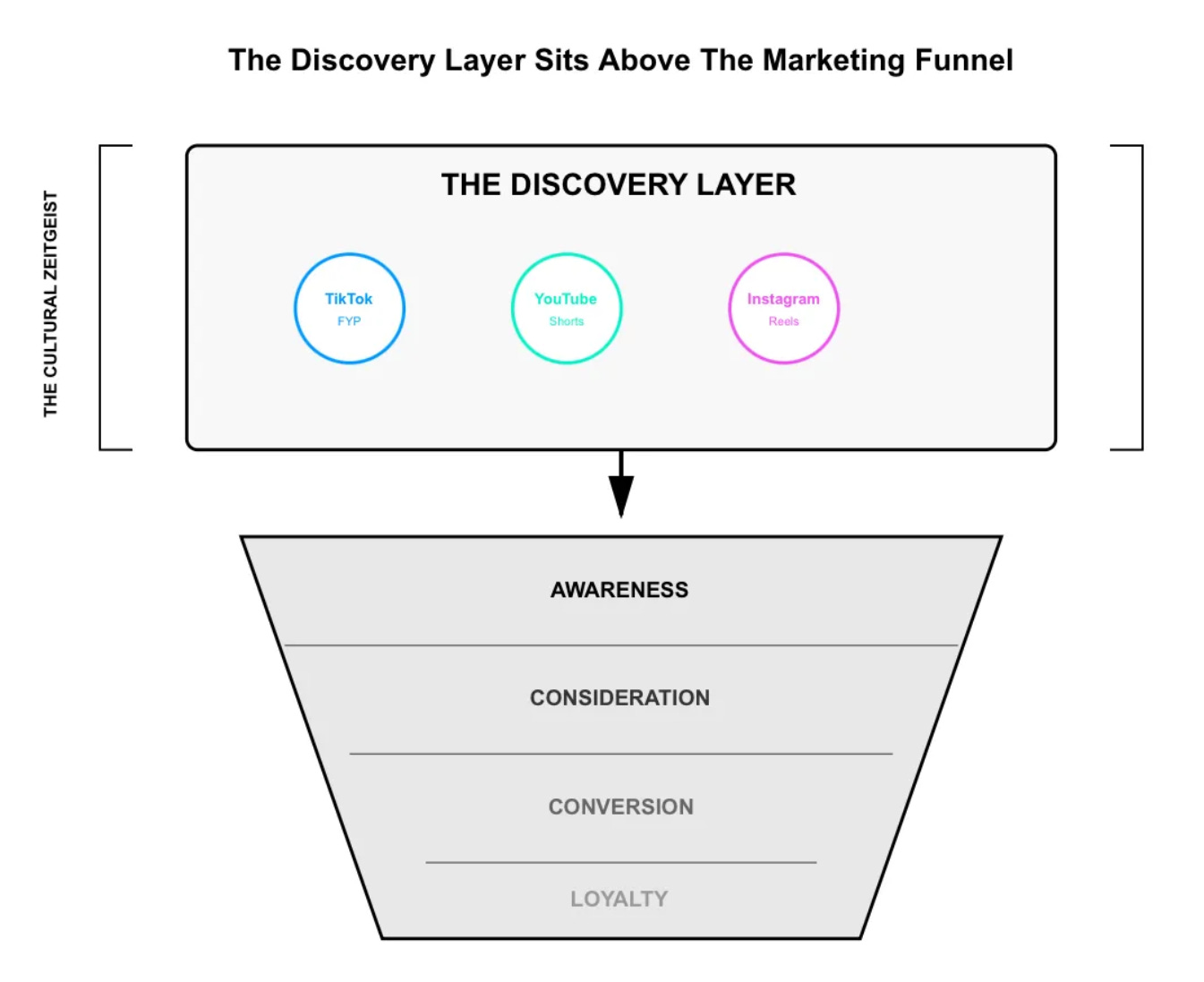What is the Discovery Layer?
The Discovery Layer is the behavioral and algorithmic environment that determines what becomes visible in digital culture. It refers to the system of interest-graph-driven platforms—such as TikTok, YouTube Shorts, and Instagram Reels—that organize content circulation through patterns of engagement rather than direct intent or demographic targeting. Within this layer, discovery replaces distribution as the mechanism that drives visibility, cultural relevance, and market growth.
Core Mechanics
The Discovery Layer operates through algorithmic systems that allocate visibility based on behavioral signals—such as watch time, replication, and interaction—rather than paid placement or follower count.
It functions as the structural layer of modern media, governing what information, creators, and products are surfaced to audiences before conscious search or purchase intent.
Users enter the Discovery Layer through participation in platform-native behaviors like viewing, remixing, or commenting, which feed back into recommendation models that cluster audiences by shared interests.
Content that aligns with recognizable cultural structures—formats, rituals, memes, and trends—gains circulation within the layer, compounding visibility through repetition and replication.
Discovery is not a stage in the marketing process; it is the infrastructure of the modern market. Visibility, culture, and demand now originate within this behavioral system.
Visualization
Strategic Implications
The Discovery Layer is the system that governs visibility in the digital economy, functioning as the first point of market formation for ideas, products, and cultural movements. Because discovery now determines what enters public consciousness, absence from the Discovery Layer results in structural invisibility—regardless of spend, legacy, or scale. Brands must design for discoverability by aligning operations, creative systems, and measurement frameworks with the behaviors that the Discovery Layer amplifies. Growth depends not on message control but on structural participation in the systems that allocate visibility.

